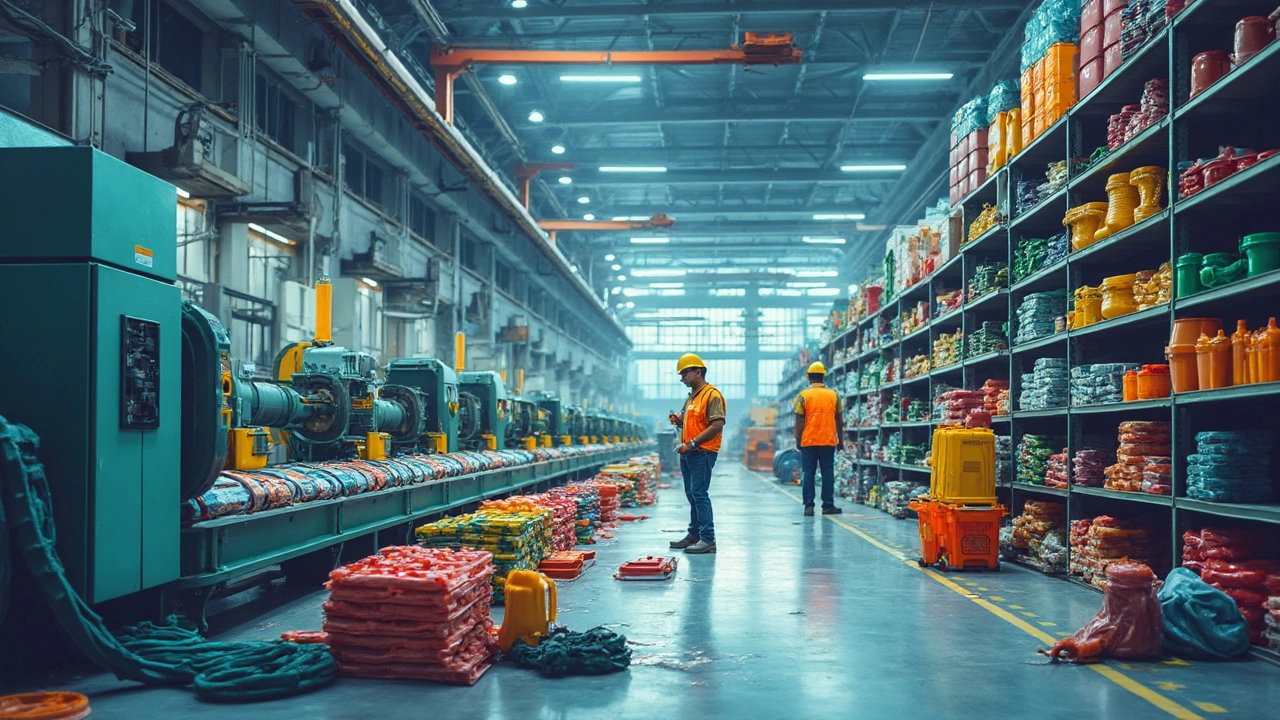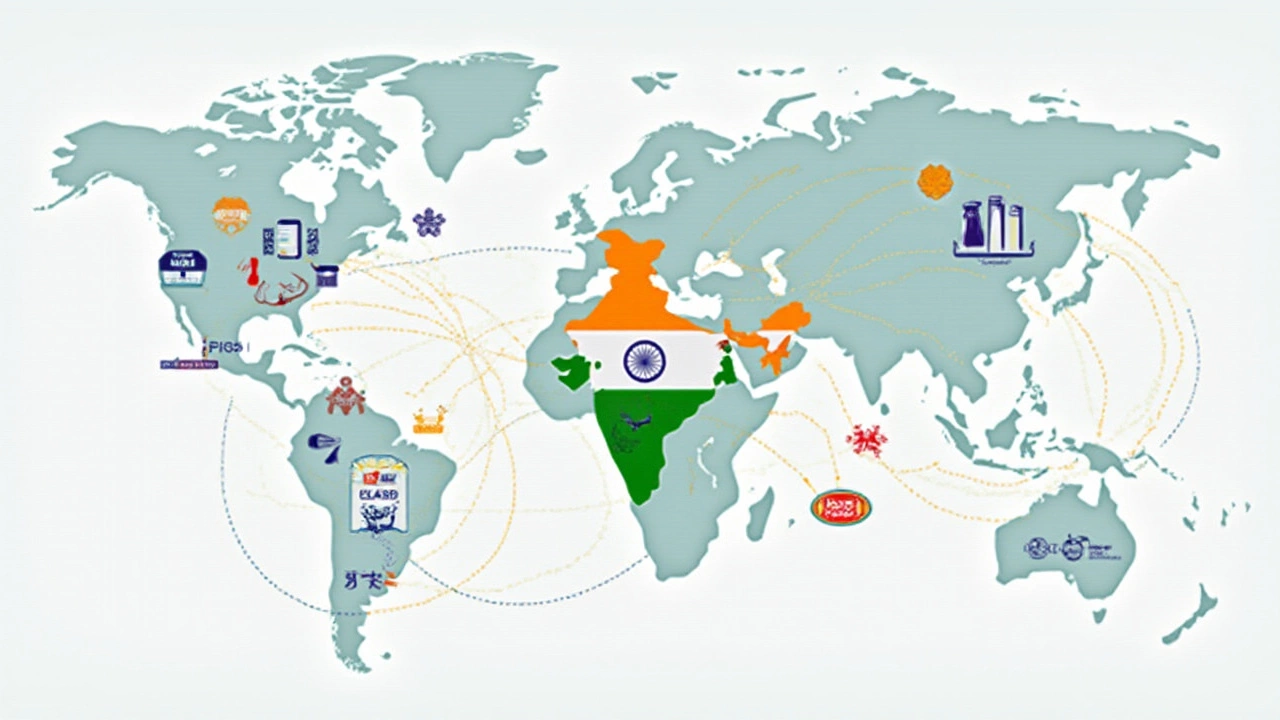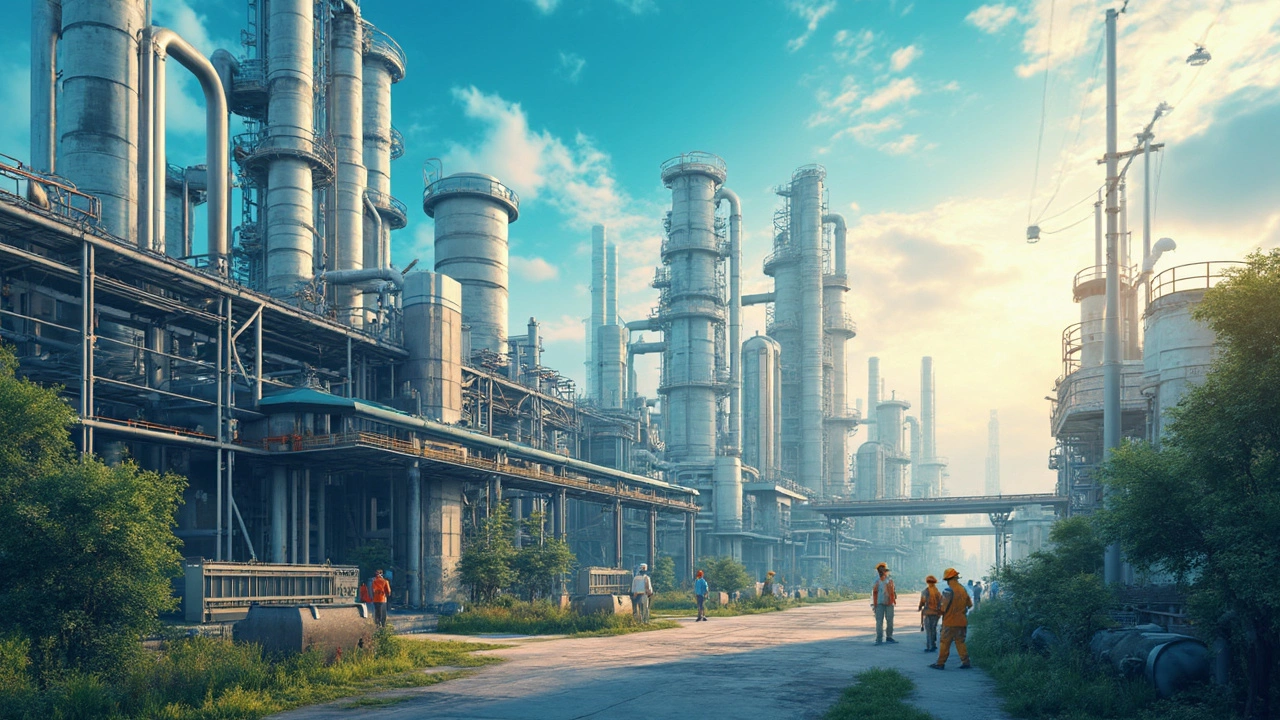Plastic Industry Giant: Which Country Leads the World?

Think about everything made of plastic around you—water bottles, phone cases, car parts, even toys. Ever wondered where most of this stuff actually comes from? If you guessed China, you’re right on the money. China has been the world’s top plastic producer for years, literally pumping out millions of tons of products that end up in every corner of the globe.
It’s not just about churning out cheap goods, either. Chinese plastic companies have climbed the quality ladder and now supply everything from cheap forks to high-precision car parts. With massive factories, a skilled workforce, and access to raw materials, no other country even comes close in volume.
- Global Plastic Powerhouse: Who’s Number One?
- Why This Country Rules the Plastic Game
- Famous Brands and Key Players
- Real-World Challenges and Industry Tips
Global Plastic Powerhouse: Who’s Number One?
If you lined up the biggest players in plastic manufacturing, China would be miles ahead. The country produces more plastic than anyone else. In fact, in 2023, China made over 85 million tons of plastic products—that’s about one third of the world’s total output. No other place even comes close in raw numbers or variety of items churned out.
Check out these numbers comparing the world’s top producers:
| Country | Plastic Production (Million Tons, 2023) |
|---|---|
| China | 85+ |
| United States | 22 |
| Germany | 16 |
| India | 12 |
What’s crazy is just how fast China widened this gap. Back in the early 2000s, it was playing catch-up, but cheap labor, government support, and massive demand changed the game. These days, you’ll see factories running round the clock, churning out everything from packaging to auto parts.
It’s not just about quantity. Chinese companies have gotten way better at making higher-end stuff too. Think precision parts for phones, dashboards for cars, or even filaments for 3D printers. When you look at the sheer size and reach of their manufacturing, it’s clear why China is the plastic industry boss.
Why This Country Rules the Plastic Game
If you look at the numbers, China’s dominance isn’t a fluke. According to the International Trade Centre, China made up over 30% of the world’s plastic products exports in 2024. That’s more than any other country by a mile. There’s a real system behind it, not just luck or cheap labor.
First off, China’s got the raw materials sorted. The country imports a ton of oil and natural gas, which are used to make plastic. On top of that, local refineries crank out the basic chemicals needed—like ethylene and propylene—at scales that make it dirt cheap to start manufacturing.
Second, the government is always on board. There are special economic zones, low taxes for factories, and shipping ports connected directly to production hubs. This setup slashes wait times and costs. As a result, you get products on store shelves faster and cheaper. Here’s how one factory manager in Guangzhou put it:
“It’s all about being fast and flexible. Changes in design, large orders—no problem. We have everything ready at our doorstep, from suppliers to advanced machines.” — Mr. Li, Plant Operations, GD Plastics
Next, China has a skilled labor force ready to work at scale. Instead of hundreds of small shops, you’ll find whole cities built around plastic industry clusters. That means if one company needs a special plastic part, there’s probably a partner right down the street ready to supply it today.
Finally, tech keeps pushing the industry forward. You see modern robotics and 3D printing being used alongside regular injection molding lines. Some factories are running 24/7 with hardly any people on the floor. This helps companies keep prices down, quality up, and orders flowing out fast.
- Huge supply of raw materials and chemicals.
- Business-friendly policies and logistics support.
- Skilled, flexible workforce in major manufacturing clusters.
- Advanced technology and constant upgrades.
Put it all together, and it’s clear why China is the go-to for anything plastic.

Famous Brands and Key Players
China’s grip on the plastic industry isn’t just about volume; it’s also about influence. Some Chinese companies are basically household names if you’re in the manufacturing world. Companies like Sinopec and PetroChina stand out—they’re massive, with deep roots in the entire plastic supply chain, from raw materials to finished goods.
Head over to the factories, and you’ll hear names like Kingfa, which is a global leader in engineering plastics and green materials. Kingfa’s products show up in everything from car interiors to electrical devices. There’s also China National Chemical Corporation (ChemChina), which owns several big brands and even snapped up the Italian tire maker, Pirelli. This shows just how far Chinese plastic giants reach, well beyond simple products.
Here’s a quick look at some top Chinese plastic manufacturers and what they’re known for:
- Sinopec: The world’s biggest plastic resin producer, handling everything from ethylene to high-grade plastics.
- PetroChina: A major player in oil, gas, and chemicals—huge in both raw and processed plastics.
- Kingfa: Leading in new materials, especially eco-friendly plastics for automotive and electronics industries.
- China National Chemical Corporation (ChemChina): Controls a bunch of big brands and has its hands in everything from tires to petrochemicals.
- Yuan Dong: Specializes in packaging plastics, used globally for food and medical products.
If you want some hard numbers, here’s a quick table breaking down the market share for the main Chinese players as of 2024:
| Company | Market Share (China, %) | Main Products |
|---|---|---|
| Sinopec | 28 | Plastic resins, ethylene, polypropylene |
| PetroChina | 18 | Raw plastic materials |
| Kingfa | 7 | Engineering plastics, bioplastics |
| ChemChina | 5 | Chemicals, tires, specialty plastics |
| Yuan Dong | 3 | Packaging plastics |
If you’re running a business and need a reliable source for plastics, these are the names to remember. Their scale means they usually offer competitive prices, a crazy range of products, and fast turnarounds. But the big guys also know how to deal with strict export rules and changing demands, so you’re less likely to run into shipping delays or surprise quality problems.
Real-World Challenges and Industry Tips
Even though China is the big dog in the plastic industry, running a plastics business there isn’t a walk in the park. Let’s get real—regulations keep changing, environmental worries are growing, and cost pressures are always looming. Here’s what’s actually happening out there, plus some tips if you want to get into the game or just stay competitive.
First off, pollution is a huge deal. China produces so much plastic that waste management and recycling can barely keep up. In 2023 alone, China’s municipal plastic waste hit nearly 60 million tons, and only about 30% got recycled. The rest? Landfills or, worse, scattered into the environment. Because of this, local governments are tightening rules on single-use plastics and pushing companies to use more recycled materials.
Costs aren’t staying still, either. Raw materials—like polyethylene and polypropylene—aren’t as cheap as they used to be. Higher oil prices and supply chain hiccups from major events like the pandemic or shipping disruptions have forced companies to keep a close eye on spending. Energy expenses, which make up a big slice of factory costs, have also kept climbing.
Here’s a quick look at some eye-opening numbers from China’s recent plastics landscape:
| Year | Total Plastic Output (million tons) | Plastic Waste (million tons) | Recycle Rate (%) |
|---|---|---|---|
| 2022 | 82.3 | 55.1 | 29% |
| 2023 | 84.7 | 59.6 | 31% |
So, what can you do if you’re looking to get involved or stand out in plastic manufacturing?
- Jump on the green bandwagon. Offer products made with recycled content or focus on things that are easier to recycle. Clients—especially major brands—actually ask for this now.
- Automate wherever possible. Labor costs are creeping up, so companies that add robots and smart machines save on payroll and cut mistakes.
- Watch import and export rules. Trade policies and tariffs have shifted a lot, especially with the US and Europe tightening restrictions. Keep tabs so your products don’t get stuck at customs.
- Stay updated on raw material prices. Lock in contracts with suppliers if you can, or hedge your bets—prices bounce around and can wipe out your profit if you’re not quick.
- Don’t ignore safety and compliance. Fines for pollution or shoddy goods have soared. If you’re selling overseas, you need to meet local standards—not just Chinese ones.
Honestly, the plastic business has great rewards, but you have to play smart. Between new tech, green trends, and stricter rules, don’t expect to cruise along just making the same old stuff. Adapt, upgrade, and keep your eyes open.





